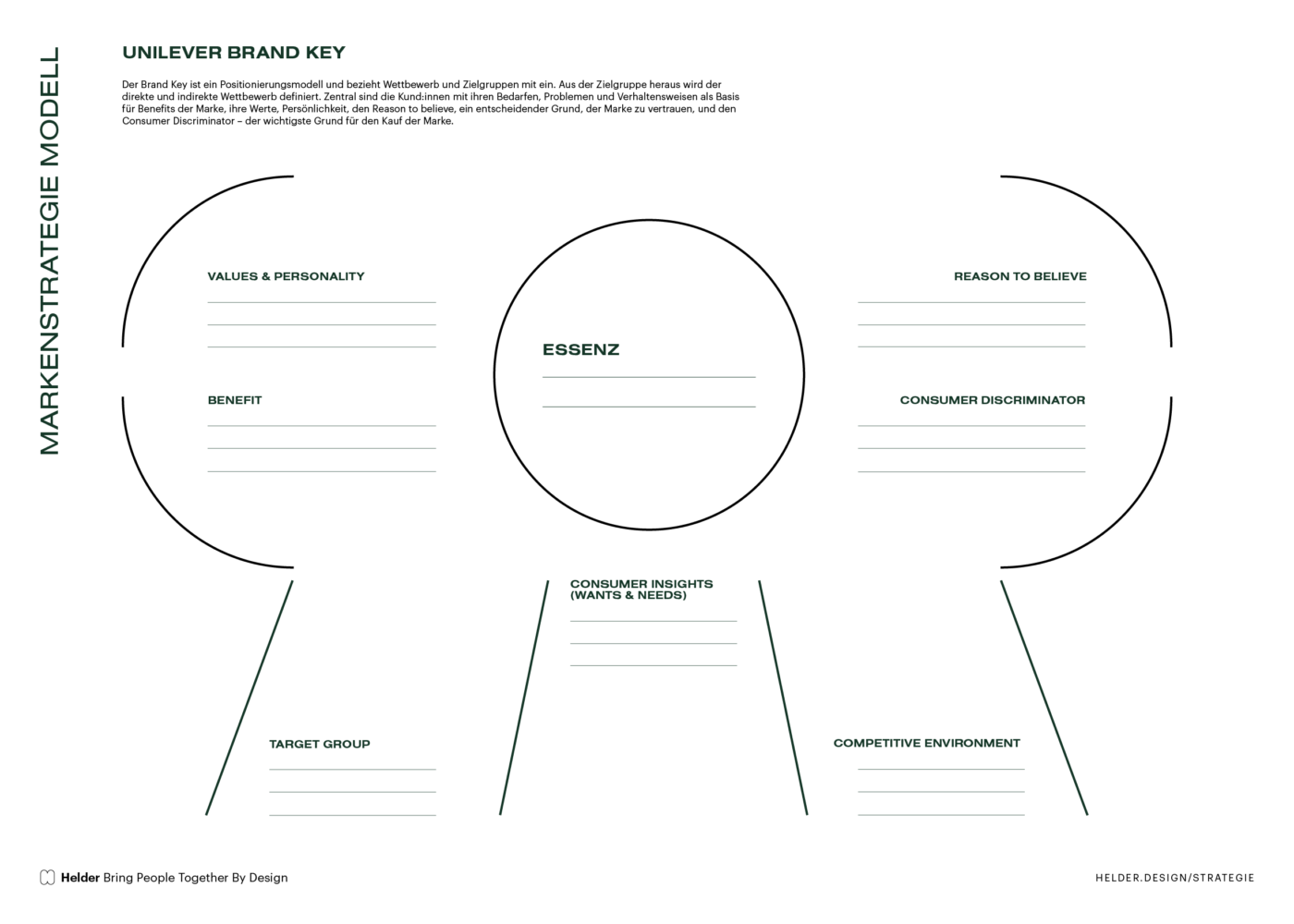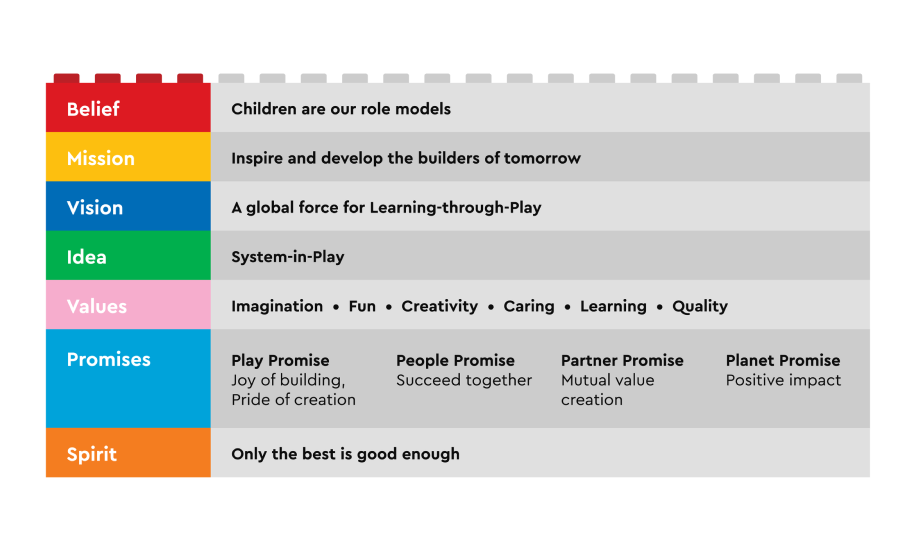Definition – What is a brand strategy?
In theory, the creative possibilities for branding are unlimited. The crucial question is: Which brand design is right for your company? Which design helps the brand present itself in the right light, inspire people, and sell its products or service better?
This is where brand strategy comes into focus. Before starting with the design, it is essential to strategically classify the brand and define the right positioning. This includes not only positioning in the market environment, but also taking a figurative position:
What does the brand stand for?
What attitude, values does it represent?
Developing a brand strategy
Helder translates your strategy into a brand design and messaging. In order for you to create a brand that makes a difference. Together with our clients we identify in our brand workshop and then analyze the strategic basics as a foundation for the design. Our clients provide the knowledge, we create focus and sharpen the strategy: with an individual brand frame, a convincing brand story and clear messages that people understand.
A clear brand strategy helps in making the right decisions in the countless business decisions that come up every day. The brand strategy should be applied in a simple, natural way in each of these moments. It is therefore important to simplify and reduce the strategy in communication without trivializing it: to its core, which people can easily dock onto and internalize.
Discover the potential of your brand with a Brand Strategy Audit
Develop the basis of the brand strategy in 7 steps: a clear brand identity
A clear brand strategy brings consistency to the brand appearance. It helps to decide what the brand stands for, what it says and how it behaves – and what or how it does not. As a consequence, a company or brand remains true to itself, which generates added value for customers: The brand is recognizable, comprehensible and believable. When people know what they can expect from a brand, it creates trust. In return, the brand benefits from that.
The individual brand strategy depends on external and internal factors, which are different for each company. For every brand, however, there are aspects that are essential in the process of developing a brand strategy. We examine them in the brand workshop.
1. Competence – define what problem the brand solves
The offered products and services always represent a solution to a problem that the target group is facing. Admittedly, there are significantly more wants than needs in our society – nevertheless, these must be taken into account. It is important to define exactly which broader problem the brand solves in order to be associated with it in the long term. The problem can have very different qualities – very specific, but also emotional, philosophical or personal.
2. Target audience – define for whom the brand offers solutions
Different needs require different solutions. It is essential to recognize which needs and wants of which target groups the brand is fulfilling. This is the only way to enter into communication with the target group – and to be heard. More about Brand Positioning
3. Brand Values – define what the brand stands for
Brand values express what the brand stands for. What is the brand’s attitude? On the basis of values, a brand can differentiate itself and at the same time ensure that a message, a product, or a campaign is in line with the brand. More about Brand Values
4. Brand Core – define what the brand is at its essence
The brand core is the quintessence of the brand values. It is an indicator of the self-similarity of the brand, its products and services. For B2B companies in particular, the so-called value branding, which consistently communicates and enacts the core value at touchpoints, has a very differentiating effect.
5. Brand Purpose – phrase why the brand is in the world
The brand purpose formulates the intrinsic motivation for the brand’s existence. It defines the why – the brand’s raison d’être. The question of purpose is becoming increasingly relevant for the brand strategy. It is no longer sufficient to want to differentiate oneself from the competition through product features or to position oneself in the labor market with pure profit maximization as a goal. More about Brand Purpose
6. Ambition – phrase what the goal of the brand is
The vision statement answers the question of what the company wants to achieve. It reflects the internal perspective and serves as motivation for the employees. It is advisable to set a time horizon that does not lie too far in the future.
7. Mission – phrase which value the brand generates
The mission statement summarizes the specific added value that customers experience when they use the brand’s services. The mission statement formulates the value proposition.
Brands that work with us
Transfer of content into a brand strategy model
In order to establish a causal relationship between the elements of the brand strategy and thus create a consistent brand identity, it helps to transfer the mentioned aspects into a brand strategy model. These models help to compare whether the individual elements are interrelated in a meaningful way. A brand strategy model clearly presents the hierarchies and synergies between the elements. It should be easy to read and understand in order to support the day-to-day business.
Helder Brand Frame
Our Brand Frame consists of the brand core, brand attributes, purpose, vision, mission, offering, target groups, brand design and tonality and forms a content framework for branding. The Brand Frame shows at a glance what the brand stands for and the context within which one must operate in order to remain aligned with the brand. With the help of the Brand Frame one can check if communication tools, styles, statements, visualizations or partnerships are on brand.
The brand frame provides clear guidelines for brand management
Creating clarity co-creatively in a brand workshop
Brand strategy models: 6 examples
For a clear brand image, various brand strategy models help to visualize the strategy. There is no model that is better than the other; primarily they differ in their complexity. We recommend choosing the model according to personal feasibility. While the common models of umbrella, family or single brand strategy or horizontal or vertical brand strategy deal with brand architecture, the following overview focuses on identity models.

Simon Sinek’s Golden Circle
More and more people are interested in the motivations of a brand and no longer exclusively in what a brand is producing or offering. The Golden Circle forms a causal chain of three links: Why, How, What. The Why describes why the brand is in the world. The How answers the question of how the brand pursues its goals and differentiates itself in the process. The What defines the concrete benefits or the added value that the company generates.

Kapferer Brand Identity Prism
The identity model for capturing brand identity is divided into three levels: Brand core, brand style, brand themes. For the definition of the brand core, Kapferer recommends an analysis of the brand history as well as the brand values. The brand style shapes the communication of the brand’s culture, personality and self-image. The brand topics contain the relations between brand and customers.

Unilever Brand Key
The Brand Key is a positioning model and includes the competition and target groups. Direct and indirect competition is defined from the target group. The central factors are the customers with their needs, problems and behaviors as the basis for the benefits of the brand, their values, personality, the reason to believe and the consumer discriminator – the reason for buying the brand.

Bate’s Brand Wheel
The circular model works its way from the outside in to the essence of the brand in 5 steps. Attributes, benefits, values and personality are analyzed and explored in how they can be communicated. At the center is the Brand Essence, which constitutes the core and transmits in compressed form what the brand stands for.

Brand Wheel by Esch
This model is suitable for the systemic analysis of a brand, less as an orientation for the day-to-day business. It includes brand attributes, brand benefits, brand tonality, brand image and brand competence. There are interdependencies between the individual components.
Practical applications of the brand strategy
The brand strategy is the basis for administration, marketing, storytelling and brand design.
Brand architecture – structuring which relationships the brand enters into
In the context of possibly already existing brands, the overall strategy helps in the decision to either clearly differentiate individual brands of a company from each other or to let them contribute to each other. A tidy brand architecture is a yardstick for determining which brands fit into the portfolio. More about Brand Architecture
Brand name – conceptualizing how the brand is called
The brand name is often the first point of contact with the brand, even before the target group knows anything about services or products. A brand strategy foundation facilitates the creation of a name. More about Naming
Claiming – informing what a brand can do
A claim establishes a link to the brand promise defined in the brand strategy as concisely as possible. A successful claim can make a significant contribution to brand awareness and perception – and thus become a veritable value-creation tool. More about Claiming
Brand story – articulating what role the brand plays
A brand story with a guiding concept makes it easier to convey the desired, defined brand message both internally and externally. All communication measures can be aligned with an overarching story for the entire brand, inviting the right customers into a story.
Brand Design – visualizing what the brand stands for
Brand design has the valuable potential to express the brand personality. It is the silent communicator of purpose, values and competencies. The goal is to convey a feeling for the brand so that potential customers can see at a glance whether the brand fits them. More about Brand Design
Brand strategies – examples using brand models
The following examples show the implementation of strategy models, which form the basis for a consistent brand development.
Brand workshop – Your path to the brand strategy
While businesses develop, this is often not the case for the brand to the same extent. Don’t leave your brand to organic growth, take the lead.
We support you. With our brand workshop, you’ll develop the foundations for consistent, strategic brand design and messaging – for a brand that makes a difference.
Contact us
In a non-binding preliminary dialog, we clarify the problem, scope and solution approachesBrand workshop
clarify values, mission, vision, purpose and USP in one day co-creativelyLeading the brand
Differentiate and communicate clearly with the help of our brand frame
Arrange a non-binding meeting
Brand Strategy FAQ
Overview of frequently asked questions
What is a brand?
Apart from a legal registration that protects a name or logo as a trademark, a brand is a construct of established ideas that is evoked in customers, distinguishing it from the products and services of other companies.
What is brand strategy?
The definition of brand strategy includes the systematic development of the brand in consideration of the business model. have different characteristics and yet are part of the same brand identity.
What is part of the brand strategy?
The essential components of a brand strategy include the following aspects:
Offering
Target group
Brand values
Brand essence
Brand purpose
Vision
MissionWhy is brand strategy important?
A clear brand strategy helps to develop a convincing brand story with plausible messaging that people can understand and relate to. It makes the added value recognizable to customers and helps connect people with a brand. A clear brand strategy enables you to make the right decisions in the countless decisions that have to be made every day.
Which brand strategies exist?
The strategy is always based on the brand itself. The principle of self-similarity is essential: the brand continues to develop according to its own rules. Industry, product characteristics, market data and target groups play a vital role.
How do you develop a brand strategy?
The process of brand development involves five fundamental steps:
Why is the brand in the world?
What values does the brand stand for?
How does the brand position itself in the market?
How does the brand position itself within the corporate architecture?
Which name fits the brand?What is brand positioning?
The positioning of a brand is an expression of the brand strategy: It shows where the brand is located in the market and for which target groups the brand is or wants to be relevant.
What is a single brand?
The term single brand or monobrand stands for a form of internal corporate marketing strategy in which each individual product or service is assigned its own brand.
Looking for a brand strategy agency?
Let’s talk!
Buyer Personae
In order to develop a successful brand strategy, it is important for companies to analyze their target groups in detail. The creation of buyer personas helps to create a better understanding of the target group.
Positioning Cross
Define for whom and for which needs the brand offers solutions
Brand Purpose Board
Align the social added value, the needs of the target group and your own goals.
Brand Values Card Deck
Develop brand values with examples and exercises and define what the brand stands for
Markenwerterad
Bringt die Marke auf den Punkt: Reduzieren, fokussieren und definieren, was die Marke im Kern ausmacht
Personality Sliders
Define the brand personality: with the Brand Personality Sliders template.
Vision Statement
Define a specific goal that the brand wants to achieve within a defined period of time.
Mission Statement
The mission statement states the value proposition.














